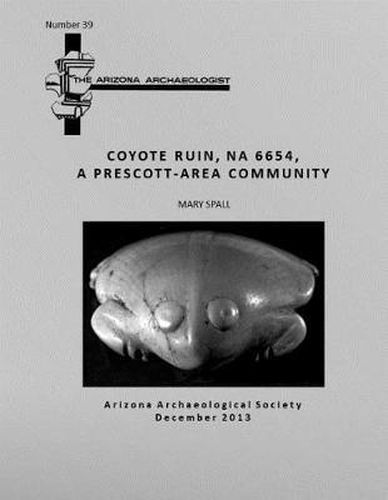Readings Newsletter
Become a Readings Member to make your shopping experience even easier.
Sign in or sign up for free!
You’re not far away from qualifying for FREE standard shipping within Australia
You’ve qualified for FREE standard shipping within Australia
The cart is loading…






This report documents the archaeological work conducted at Coyote Ruin (NA 6654), a Prescott Culture site located northeast of Prescott Valley, Arizona. The field work for this project involved survey, mapping, excavation, and recording of rock art, followed by extensive analysis and write-up of the features and artifacts. Work began in November 1998 and concluded in April 2004 using volunteers from the Yavapai Chapter of the Arizona Archaeological Society. Data recovered indicates Coyote Ruin represents a record of human occupation from perhaps the A.D. 900s until after 1300. Excavations at the site in the late 1920s are the earliest in the Prescott area for which we have documentation. Included herein is the account of J. W. Simmons who worked at the site starting in 1927. The Yavapai Chapter conducted excavations at 11 of the 26 masonry rooms, 2 of the 10 pit structures, and documented many of the agricultural and water-control features. Ceramics recovered included Prescott Gray Ware, Verde Brown, and a range of tradewares mostly from the Kayenta and Little Colorado River areas. The abundance of projectile points and bones from deer, antelope, elk, and small mammals indicated the importance of hunting for the inhabitants. Archaeo-botanical analysis documented consumption of maize, harvesting of a variety of seeds, and use of agave. The concluding chapter of the report places the pueblo into a context of 13th to 14th century occupation in the Prescott area, discusses how the Prescott Culture was organized in this period, and provides some hypotheses that need to be examined with future research.
$9.00 standard shipping within Australia
FREE standard shipping within Australia for orders over $100.00
Express & International shipping calculated at checkout
This report documents the archaeological work conducted at Coyote Ruin (NA 6654), a Prescott Culture site located northeast of Prescott Valley, Arizona. The field work for this project involved survey, mapping, excavation, and recording of rock art, followed by extensive analysis and write-up of the features and artifacts. Work began in November 1998 and concluded in April 2004 using volunteers from the Yavapai Chapter of the Arizona Archaeological Society. Data recovered indicates Coyote Ruin represents a record of human occupation from perhaps the A.D. 900s until after 1300. Excavations at the site in the late 1920s are the earliest in the Prescott area for which we have documentation. Included herein is the account of J. W. Simmons who worked at the site starting in 1927. The Yavapai Chapter conducted excavations at 11 of the 26 masonry rooms, 2 of the 10 pit structures, and documented many of the agricultural and water-control features. Ceramics recovered included Prescott Gray Ware, Verde Brown, and a range of tradewares mostly from the Kayenta and Little Colorado River areas. The abundance of projectile points and bones from deer, antelope, elk, and small mammals indicated the importance of hunting for the inhabitants. Archaeo-botanical analysis documented consumption of maize, harvesting of a variety of seeds, and use of agave. The concluding chapter of the report places the pueblo into a context of 13th to 14th century occupation in the Prescott area, discusses how the Prescott Culture was organized in this period, and provides some hypotheses that need to be examined with future research.